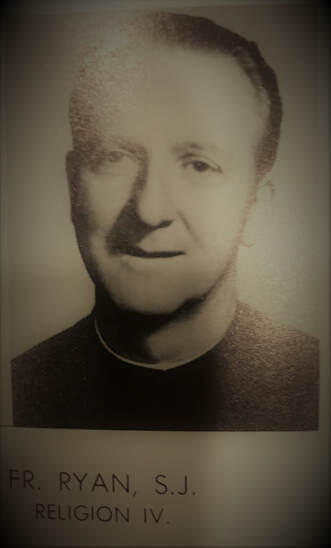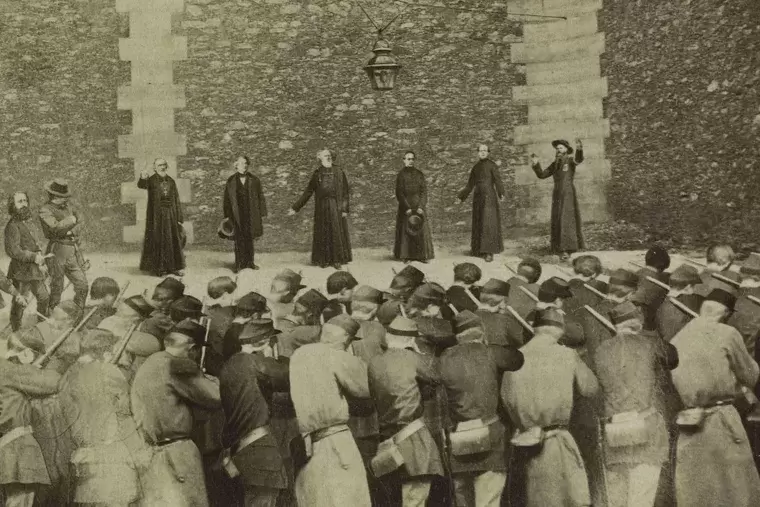|
What if the French Revolution were transposed to San Francisco in the 1960s? What might have happened? What follows is a short speculative fiction. Speculative elements are based on conjecture about what might have been, and the evidence is incomplete, or is it? Read on. Paris The distance from Place de la Bastille to Chapelle Expiatoire is three miles. Tragic events of the French Revolution along this route include these sites: Place des Vosges, Conciergerie on Ile de Cite, Jardin de Tuileries, and Place de la Concorde. You can take a walking tour of them. San Francisco The distance from St. Ignatius High School to San Francisco City Hall was two miles, and the distance to the Haight-Ashbury neighborhood was half a mile. At the time, St. Ignatius was a traditional Catholic boy’s school. My brother, Tom, and I attended in the 1960s. The turmoil happening around me seemed normal. Disorderly conduct, sometimes criminal, occurred at City Hall, in the Haight, and in locations in between or nearby, not as ruinous as the French calamities … on the surface. Speculation What if the French Revolution could be zoomed forward to San Francisco in the 1960s? What would have happened to the school’s leadership: Father Harry Carlin, SJ, president, Father Edward McFadden, SJ, principal, and Father Leo Hyde, SJ, vice principal? According to Wikipedia, “Victims of the Reign of Terror totaled somewhere between 20,000 and 40,000. According to one estimate, among those condemned by the revolutionary tribunals, about 8 percent were aristocrats, 6 percent were clergy, 14 percent were middle class, and 70 percent were workers or peasants accused of hoarding, evading the draft, desertion, rebellion, and other purported crimes. Of these social groupings, the clergy of the Catholic Church suffered proportionately the greatest loss.” Given the centrality of St. Ignatius, were the episodes of the revolution transplanted to San Francisco in the 1960s, all three Jesuits would have been arrested and imprisoned and possibly exiled or guillotined. That is not speculation. Keep going. Back to Paris A similar reoccurrence transpired in 1871. By Solène Tadié World May 28, 2021 PARIS — May 28, 1871, ended the dark episode of the Commune of Paris, a bloody civil war that [set in opposition] … the legitimate French government of the Third Republic [and]… the socialist and revolutionary republicans who had controlled Paris for 72 days. The terrible wave of repression that followed this period of insurrection, considered the most violent episode of the country’s history since the French Revolution (with approximately 6,500 deaths), [covers] … the ruthless exactions committed by the Communards on those they considered to be their enemies, including many clergymen. … https://www.ncregister.com/news/remembering-the-catholic-martyrs-of-the-commune-of-paris Courtesy of the National Catholic Register. This photo montage depicts the execution of Paris Archbishop Georges Darboy and four other ‘hostages of the Commune’ at the Grande Roquette prison, May 24, 1871. (photo: Ernest Charles Appert / CC0 Paris MusÈes / MusÈe Carnavalet)  Photo of Father William Ryan, SJ, from my yearbook. In 1951 he was held in solitary confinement in China by the communists. He said that his parents and his superior had no idea where he was for the entire year. Bill was a big man, over 6 feet, and very disciplined.
6 Comments
Sam
5/5/2022 07:15:49 am
hmmmm, sounds intriguing but maybe you don't have to make it up, maybe the soft revolution has been happening since the 60s
Reply
Sam
5/6/2022 11:28:11 am
Our society's acceptance of Marxism, in whole or in part, demonstrates that the winning argument is not necessarily true. A belief in God and natural law is required for the foundation of a just society. It won't be a perfect society, but much better than any society without a belief in God and natural law, just look at the "villages" along Highway 99! Marxism, and the West, have rejected both God and natural law. Although we can be certain in our belief in God and natural law, try to convince anyone that has been raised in the West and has been taught to believe Marxism or semi-marxism in all its forms. We need a genius-like intellect to win the argument. Jordan Peterson is a great intellect but unfortunately he offers a result-oriented philosophy (Christian civilization just works, Marxist civilizations are a train wreck), which is a true understanding of the situation, but doesn't conquer the marxist argument with a conquering philosophical argument in the field of battle of ideas. The point is to make the world a better place, not make it worse. Marxism and semi marxism makes it worse.
Reply
5/6/2022 11:33:17 am
I see he is a YouTube personality. Not interested. He needs the Catholic Church.
Reply
Josef Ketzer
5/7/2022 12:42:47 pm
“The revolution, like Saturn, devours its own children!"
Reply
5/7/2022 01:56:19 pm
If you have a picture of Pater Rektor Grosser, send. I'd like to see it and any pictures of the school or classmates, too. The Jesuit community at the time had a rector, a priest who was not a high school administrator.
Reply
Leave a Reply. |
Categories
All
Archives
July 2024
|

 RSS Feed
RSS Feed